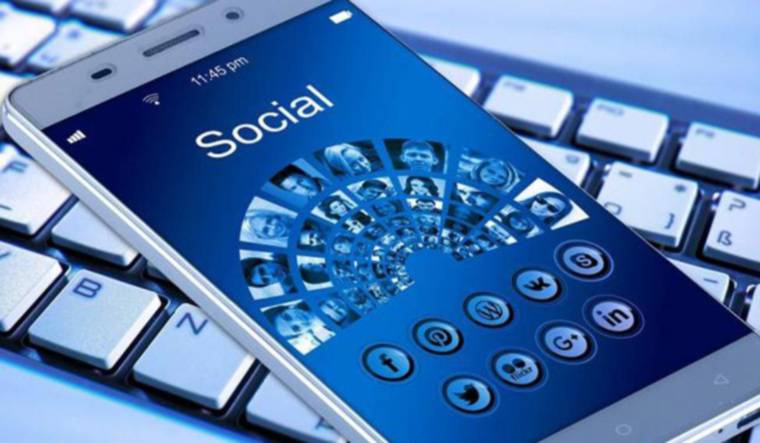We all have been through situations when we are scrolling through posts or watching YouTube videos and before we even realize an hour or two has already been passed.
On one hand, social media has changed people’s outlook towards business and technology, but on the other, it has also changed the way people communicate and spend their time. Resultantly, these advancements have caused our younger generation to be at the forefront of this change. We can view social media as two sides of the same coin, bringing with it both positive and negative aspects.
However, in recent years, it has been observed that negative consequences are overpowering the positive ones, especially when talking in context to teenagers. Now, problems are not just confined to cyberbullying. Excess use of social media has resulted in poor academic performance, decreased family time, teens being dragged away from their culture, increased vulnerability towards sexting, and mental disturbance due to cyberbullying.
Social networking sites although have been recognized as a great resource for information, studies however, suggest that the demerits of social media are often outnumbered by the merits. This belief can be cemented by the fact that students mostly use social networking sites primarily for fun, to kill time, to meet existing friends or to make new ones. These sites are designed in a way to attract maximum people.
Thus, even if you do not have an initial intention of wasting your valuable time on social media, you still are entrapped by catchy thumbnails or meme pages. This deviates students from their actual objective, for which on the first place, they opened social media.
Moreover, this fact cannot be denied that students who tend to multitask often show reduced academic performance. Our ability to focus on the task at hand is significantly reduced by distractions brought about by YouTube, Facebook, Instagram, Twitter or Snapchat. To further add, compulsive use of social media does not go unnoticed by parents and teachers, as this correlation is clearly reflected on students’ result cards. In these unprecedented times, proliferation in COVID-19 cases has restricted everyone inside their house. Consequently, the outdoor activities and sports are highly discouraged.
Thus, teenagers often spend their free time using social media. This has deviated teenagers from career and personal development goals, which could add up as plus points in their academic trajectory. Instead of investing this judicious time in activities like meditation, fitness, learning new things, reading books, or researching in various disciplines, they are utilizing their time in likes, shares, comments, posting selfies, and chatting. Without realizing that paying little attention to personal development can bring about negative consequences, months, or years down the road.
Another detrimental effect brought about by social media is that it builds a wall among family members. Though social media is a great way to interact, yet problems emerge when teenagers start detaching themselves from their families. Overindulgence of teenagers in social media has pulled them away from public spaces, family gatherings, traditional social settings, neighborhoods, and other integral associations, making them isolated in their rooms. It seems that teenagers have made a trade-off by subtly substituting social media for family gatherings and face to face interactions.
Social media, when referred in a negative way makes us shed light on another major problem, cyberbullying. Cyberbullying is quite common with teenagers in Pakistan and those victimized by this often succumb to conditions of anxiety, self-isolation, severe depression, and in some cases even suicide.
Teenagers often share too much with too many because they perceive that the ‘social quotient’ of a person is determined by their number of friends or followers and not by how good they are in real life. In an attempt to increase followers or friends, they add unknown people, giving them a right to invade their privacy.
Subsequently, exposing these teenagers to higher risks of cyberbullying. Some teenagers are easily influenced by the magnificent lives and bodies documented on Instagram and Facebook. This not only erodes their self-confidence and self-esteem but they also constantly start comparing themselves with the person behind their mobile screen.
Consequently, they start complaining to themselves for not being slimmer, prettier, stronger, taller, smarter, and the list goes on. These flawless pictures, being portrayed on social media, also have some profound psychological outcomes, making sensitive teenagers feel ostracized from society.
Another problem arising from social media is sexting. Sexting is basically sending, receiving, or forwarding sexually explicit content, primarily through social media. Although at the moment there are no available statistics for this in Pakistan, but if we observe the increasing rates worldwide then we can admit that Pakistani teens are also not immune to this problem. The group most susceptible to sexting is of girls. Several girls in Pakistan have received sexually explicit messages from unknown accounts and in some cases, they even received some inappropriate pictures. In fact, a recent incident can be quoted, where some teachers of a private school association were held accountable for sending sexually explicit messages to their students.
Conclusively, we cannot deny that social media is a double-edged sword. However, it is entirely upon us which side we opt for. Using technology and social media is really important when living in this era, but what is more important is to maintain a balance between the virtual and real-world. Academics and family should be prioritized. If social media is destroying your precious time then this problem should be addressed because if not taken into consideration, it can have some grave repercussions.






